
Dear Readers,
I hope your holiday was filled with good cheer and good people. Ours was on the quiet side; just my husband and I and our two grown children at the table on Christmas Eve and Christmas Day. We did some marathon movie watching, managing to squeeze in all eight Harry Potters and two Hitchcocks—Psycho, and The Birds—before our son headed back to New England to ring in the New Year. We weren’t total slouches; we made it to DC one day, where we took in this moving exhibit, on Chinese photography between the 1990s and 2000s, at the Hirshhorn.
On Jan. 1, we invited our good friends (and next-door neighbors—lucky us!) over for a simple dinner: citrus and radicchio salad, roast beef with carrots, and the torta caprese, flourless chocolate almond cake, from my new cookbook. I’ve decided I like this pared down vibe and I’m carrying it with me into 2023.
I’m not really the type to choose a word to define and guide my year, as I am far too scattered and seat-of-the-pants to commit to such intention and the orderliness it implies. But a few weeks ago, one presented itself to me (sort of like the sword of Gryffindor???) and so I’m going with it. The word—elemental—caught my eye as I was reading the headnote that accompanies a recipe for carabaccia, Tuscan onion soup, in the Via Carota Cookbook. You might remember that I included the book, by Jody Williams and Rita Sodi, with Anna Kovel, in my holiday gift guide last month. I love the gentle tone and simple elegance of the recipes, and have bookmarked quite a few to try. Here’s the aforementioned headnote:
An elemental version of onion soup, carabaccia is quite light, as it’s made without meat broth. An egg cracked into each bowl makes this a simple supper.
Those words made me crave that soup, and so I made it the other night for dinner, cutting red onions into thin half-moon slices, letting them cook down slowly with finely diced carrots and celery, simmering everything in homemade vegetable broth, and, as a final step, poaching eggs directly in the pot. It was just what the headnote promised.
Reading those lines, it struck me once again that my own cooking has been tending in this direction for awhile. I mentioned this in a newsletter last February when I interviewed my friend Amelia, a self-described “simplicity evangelist” in the kitchen. And in the introduction to Everyday Italian, I wrote that “I love making dishes that get their “wow” factor from fresh seasonal ingredients and good pantry staples, rather than from overwrought sauces or complicated techniques.”
What does that mean in the context of this newsletter? Simple? Basic? Easy? Not necessarily, though some recipes will be those things. What I’m really talking about is deepening my exploration of Italian cuisine as I understand and practice it, which is a cuisine that is regional, seasonal, and also personal. I will continue to interview people in the world of Italian food who inspire me, and I will keep sharing my well-tested recipes.
But I’m adding a new feature. One Sunday of each month, I’ll post a premium newsletter that delves into a specific aspect of Italian food and cooking. It might be a deep dive into an iconic pasta or pastry, or an exploration of a new or vintage cookbook. It might be a seasonal or regional Sunday menu for you to make at home. Or it might be two very different takes on a particular of dish, sort of like I did here. I’m putting few limits on this feature; I kind of just want to see where it takes us. Paid subscribers will receive the full premium newsletter in their inbox and free subscribers will receive a preview with an option to upgrade. In any case, there will continue to be plenty for all.
I’m sharing Via Carota’s carabaccia recipe below*, and on Tuesday I’ll be sharing another “elemental” recipe from the book with my paid subscribers: Panna Cotta all’Olio, an improbably light version of the classic spoon dessert, made with olive oil. By the way, this is the last time I’ll be using my “chosen” word; already it is starting to sound contrived. I just wanted to give you a sense of my direction as the newsletter moves into 2023.
* Coincidentally, as I was working on this newsletter, the latest issue of Giulia Scarpaleggia's
popped into my inbox. Giulia also wrote about the Via Carota cookbook and shared a recipe for an Italian ricotta cheesecake adapted from the book.Do you have a favorite new (or old) cookbook that you’ve been cooking from lately?
*UPDATES*
TOURS
A number of you have contacted me about upcoming tours. As of right now, I don’t have a specific date for a 2023 culinary tour. If one happens, it will be a Liguria tour, either in Fall ‘23 or Spring ‘24. I’ll post an update as soon as I have more information.
COOKING CLASSES
The Agnolotti del Plin class and the All-Purpose Egg Pasta class are sold out. But there are still spots available in the Homemade Turle (Ligurian Potato and Cheese Ravioli) class on Saturday, Feb. 25; and the Everyday Italian Menu class, on Saturday, March 11.
Paid subscribers can use the code here to receive a 30% discount for any of the classes currently listed.
RECIPE: Carabaccia ~ Onion and Bread Soup
Did you know that onions have symbolic meaning? The ancient Egyptians apparently believed that the root vegetable’s concentric circles symbolized eternal life. Some cultures believed onions had medicinal or protective powers. In one of my favorite children’s books, “Holes,” by Louis Sachar, two boys on the run survive by eating onions. Later, the accumulated onion juice in their systems protects them from being bitten by poisonous yellow-spotted lizards.
What I’m getting at is this: onions, like carrots and other workhorse vegetables, are underrated. They contribute much to the character of Italian cooking, providing an essential flavor base for broths, soups, and many sautés, stews, and braises. Think of the transformation that takes place in this recipe: with time, a low flame, and a little fat—just 2 tablespoons, the bright, eye-watering purple half-rings that fill a pot eventually collapse into a silky chestnut-colored heap of condensed sweetness.
I’ve adapted this slightly from the recipe in Via Carota, using my own recipe for vegetable broth, which has a splash of wine in it; cooking the onions a bit longer; and using slightly less broth than originally called for. One of my IG pals messaged that she used homemade chicken stock and tossed in a parm rind, which gives you a richer result—nothing wrong with that on a cold winter night.
INGREDIENTS
2 pounds (1 Kg) red onions
2 medium carrots
2 celery stalks
Extra-virgin olive oil
6 fresh sage leaves
Fine salt
Freshly ground black pepper
6 to 7 cups homemade vegetable broth (recipe follows)
4 thick slices country bread
4 large eggs
3/4 cup (75 g) freshly grated Parmigiano-Reggiano, for serving
INSTRUCTIONS
1. Halve the onions lengthwise and thinly slice crosswise into half-moons. Finely dice the carrots and celery.
2. Coat the bottom of a large, heavy-bottomed pot with 2 tablespoons (30 ml) olive oil and set over medium heat. Add the onions, carrots, celery, and sage leaves; stir in 1 1/2 teaspoons (4 g) salt and a few grinds of pepper. Reduce the heat to medium-low and cook gently, stirring often, until the vegetables are completely soft and begin to release their sweetness, 40 to 55 minutes. When the onions begin sticking to the bottom of the pot, raise the heat to medium-high, pour in the broth, and bring to a simmer.
3. Stir the soup, partly cover the pot, and reduce the heat to medium. Cook until the soup is a deep, tawny color and the olive oil has risen to the top, about 45 minutes; season with salt and pepper as needed. The soup should be somewhat brothy but not watery; continue to simmer if necessary to thicken it a bit. If it’s too thick, add a couple of splashes more broth or hot water. (At this point, you can let the soup cool to room temperature and refrigerate it for up to 3 days or freeze for up to 3 months. Heat to a gentle simmer before proceeding.)
4. Toast the bread under the broiler and place a slice in each of 4 warmed soup bowls.
5. Crack the eggs and drop them, one at a time, into the soup, making sure they aren’t touching. Cover the pot and cook the eggs at a gentle simmer for about 3 minutes, until the whites are set but the yolks are still soft. Scoop out the eggs and place them on top of the slices of bread. Ladle the soup around the eggs and over the bread. Drizzle each bowl with olive oil and sprinkle with a generous amount of Parmigiano cheese.
HOMEMADE VEGETABLE BROTH
A splash of white wine gives this light vegetable broth a little extra body. (Recipe slightly adapted from The Glorious Soups and Stews of Italy.)
Makes 6 to 7 cups
INGREDIENTS
2 tablespoons (30 ml) extra-virgin olive oil
2 carrots, peeled, trimmed, and cut into 2-inch (5-cm) pieces
2 ribs celery, trimmed and cut into 2-inch (5-cm) pieces
1 large yellow onion, quartered, 2 quarters each stuck with 1 whole clove
Stalks and feathery leaves from 1 fennel bulb (optional)
5 to 6 sprigs fresh flat-leaf parsley
2 springs fresh thyme
1/2 teaspoon whole black peppercorns
1/2 cup (120 ml) dry white wine
8 cups water
1 teaspoon fine sea salt, more as needed
INSTRUCTIONS
1. Place 2 tablespoons (30 ml) olive oil in a heavy-bottomed pot and set over medium heat. Add all the vegetables, herbs, and peppercorns and cook, stirring from time to time, for 10 to 15 minutes, or until the vegetables have begun to soften and the onion is the palest gold. Raise the heat to medium-high, pour in the wine, and let it simmer for about 2 minutes. Add the water and salt and bring to a boil. Reduce the heat to medium-low and simmer gently, uncovered, for 45 minutes. The broth is done when it has reduced slightly in volume and has a full flavor. Taste and adjust the seasoning with salt.
2. Strain the broth through a fine-mesh sieve lined with damp cheesecloth into a clean bowl or container. Use the back of a wooden spoon to press down on the solids, extracting as much liquid as possible. Discard the solids. Let the broth cool to room temperature, then cover and refrigerate for up to 3 days or freeze.
More onion soup:
Here’s my own version of Zuppa di Cipolla, originally published in The Glorious Soups and Stews of Italy. It calls for a mix of red and yellow onions, homemade meat broth, and freshly grated Pecorino Romano cheese.
And here’s a recipe for food writer Jamie Schler’s Soupe à l’Oignon, which she posted in her recently launched newsletter. Jamie and I have been friends for years. She and her husband own and run a small hotel in Chinon, France, which I had the pleasure of visiting when we co-hosted a food writing workshop a few years ago. For a long time Jamie wrote a blog called Life’s A Feast, but she’s moved over here to Substack, so please be sure to subscribe for her take on real French cuisine.
PICTURE ITALY: Florence, 2016
As always, thank you for reading, subscribing, and sharing.
Alla prossima,
Domenica

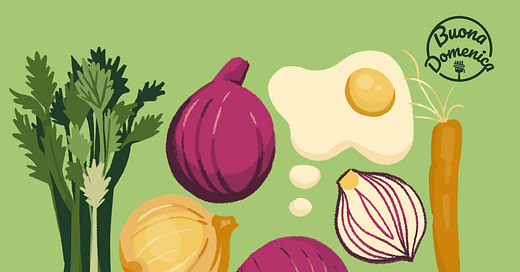


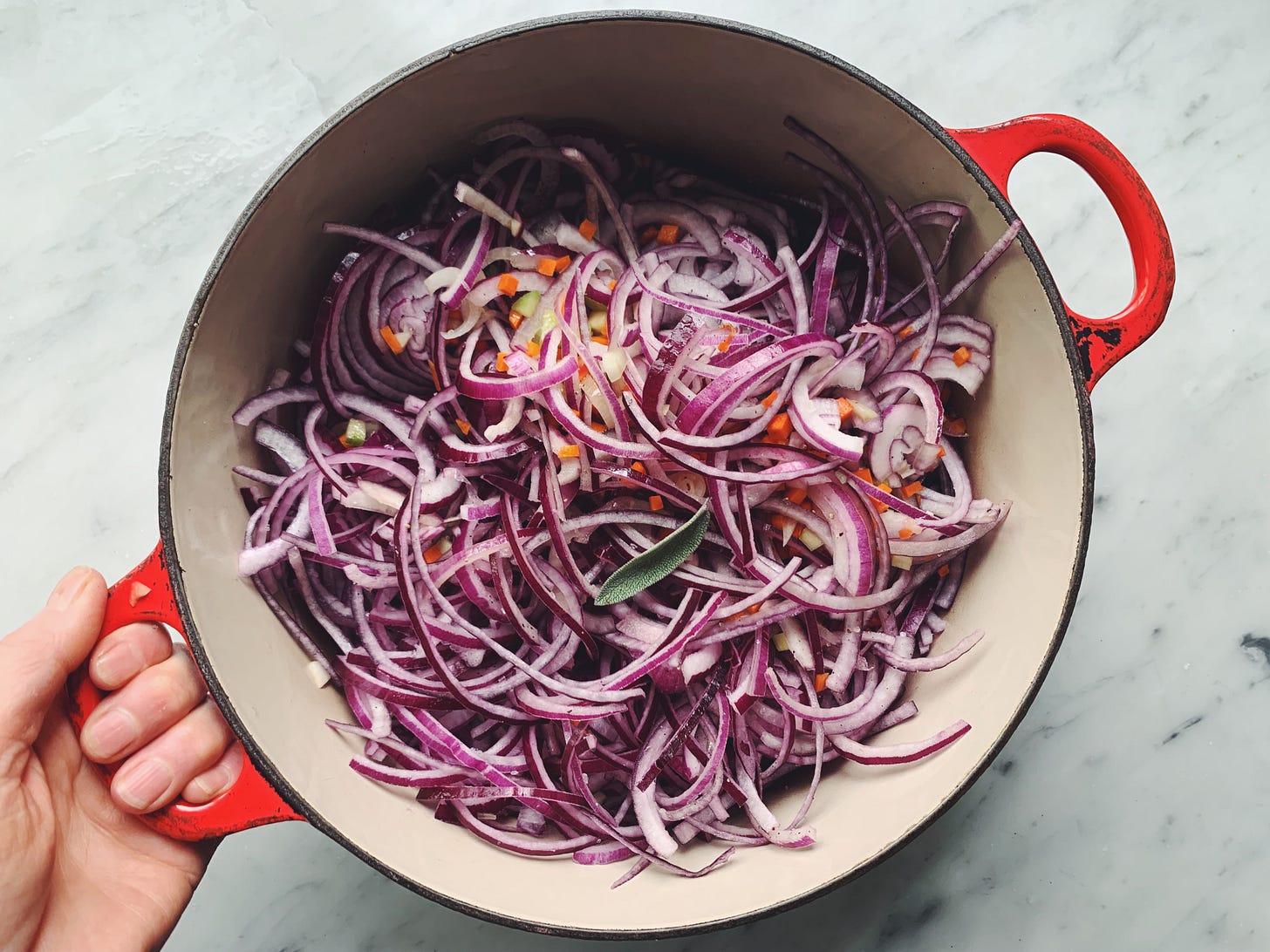
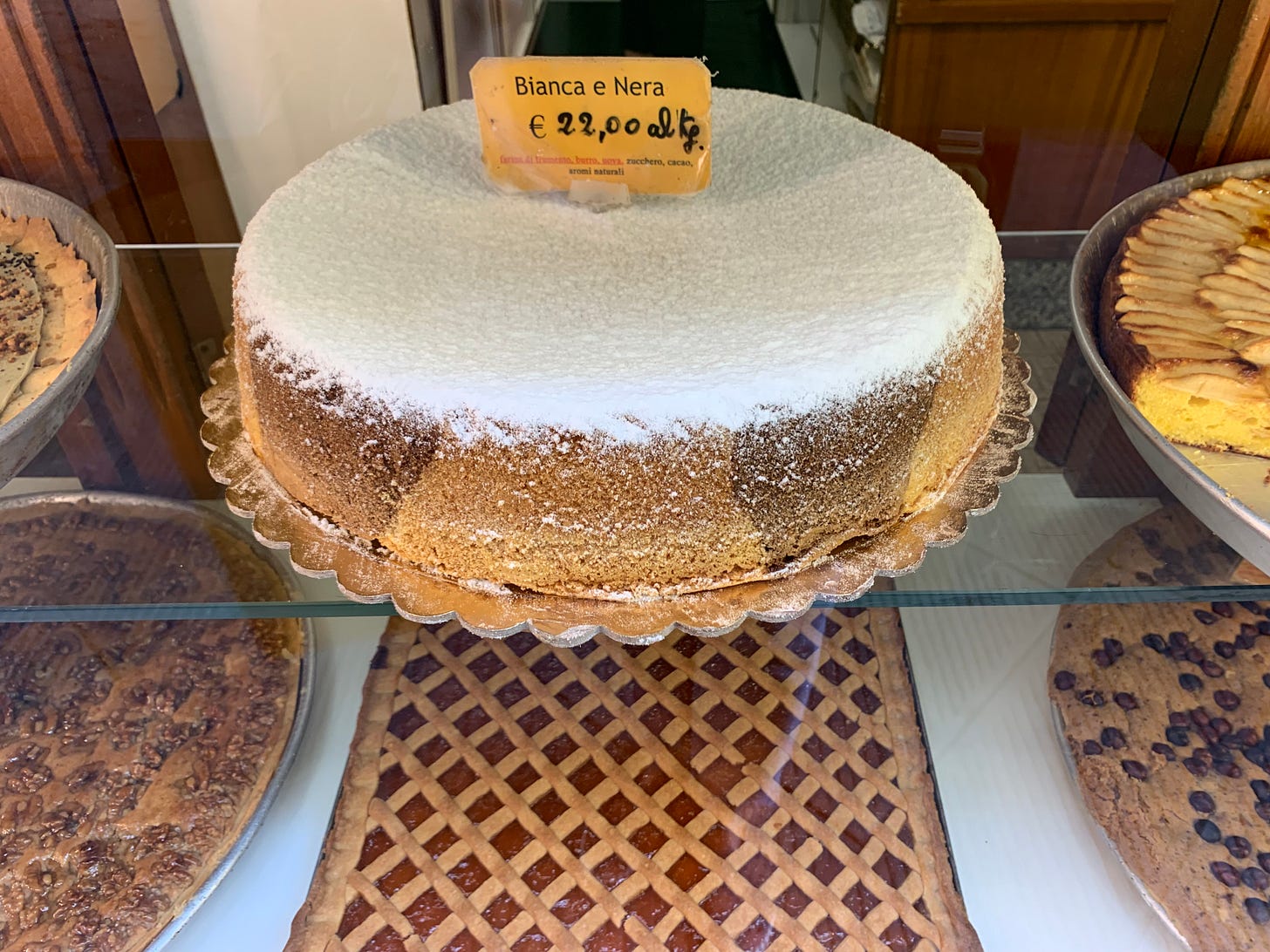
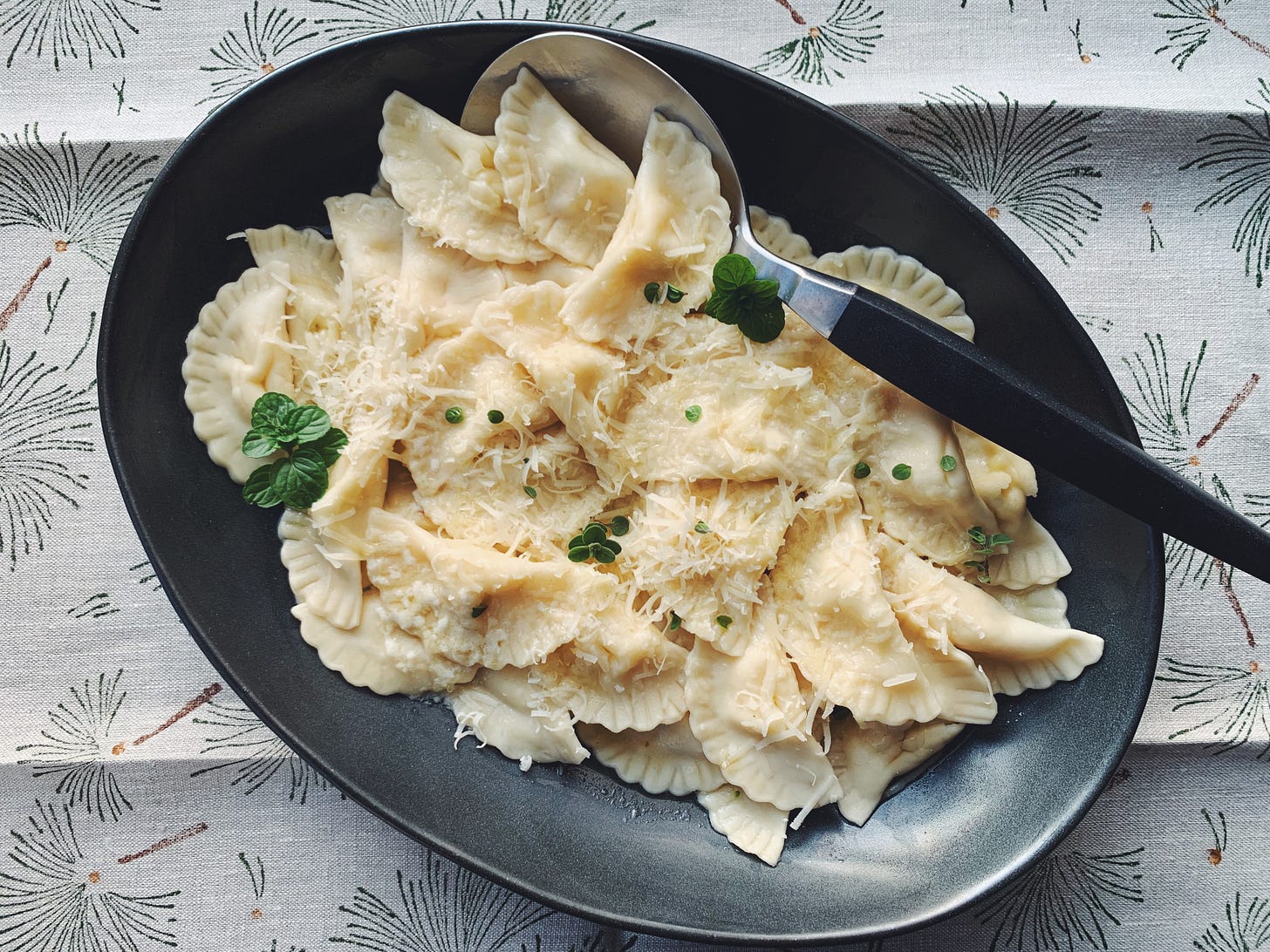
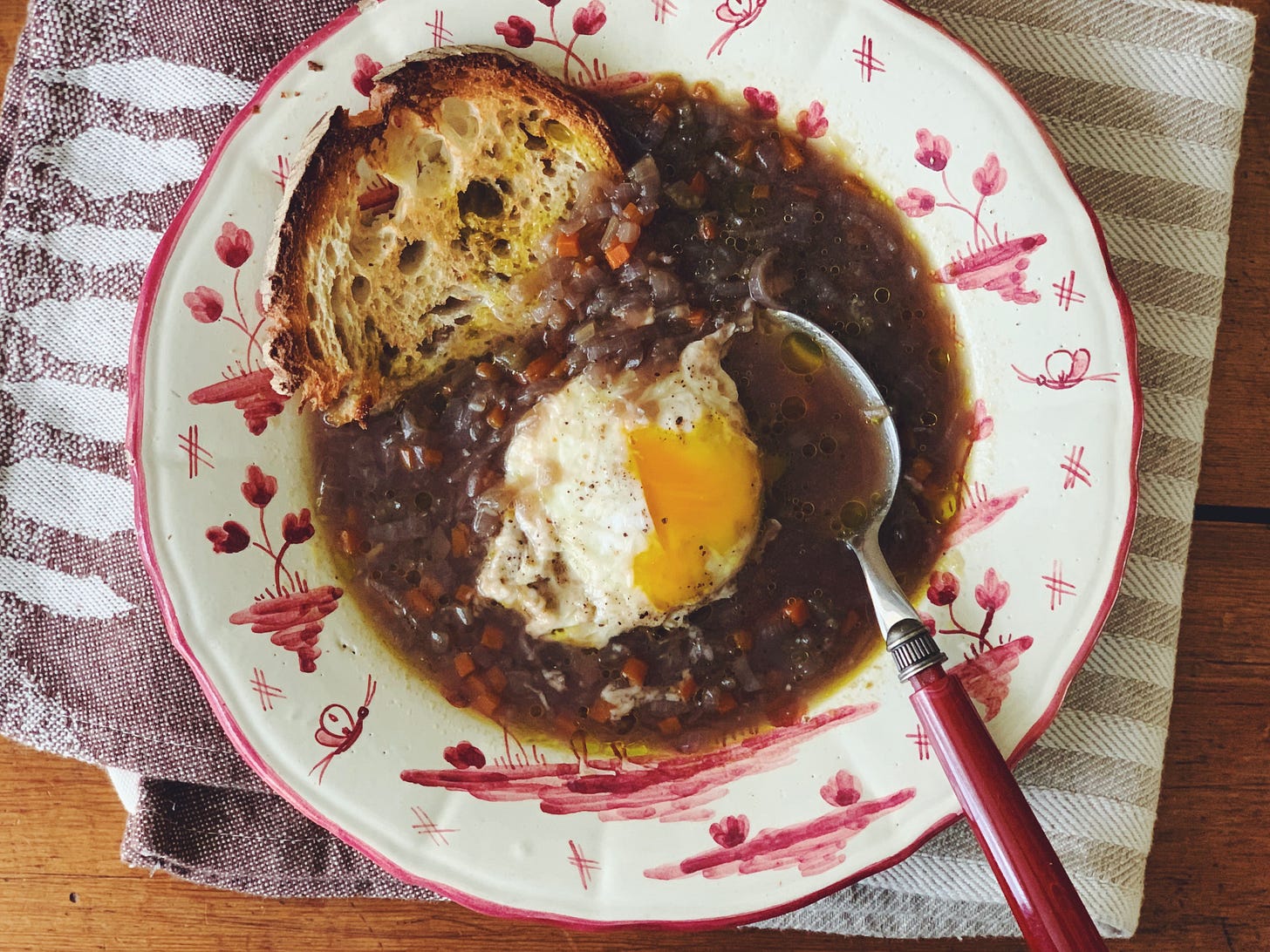
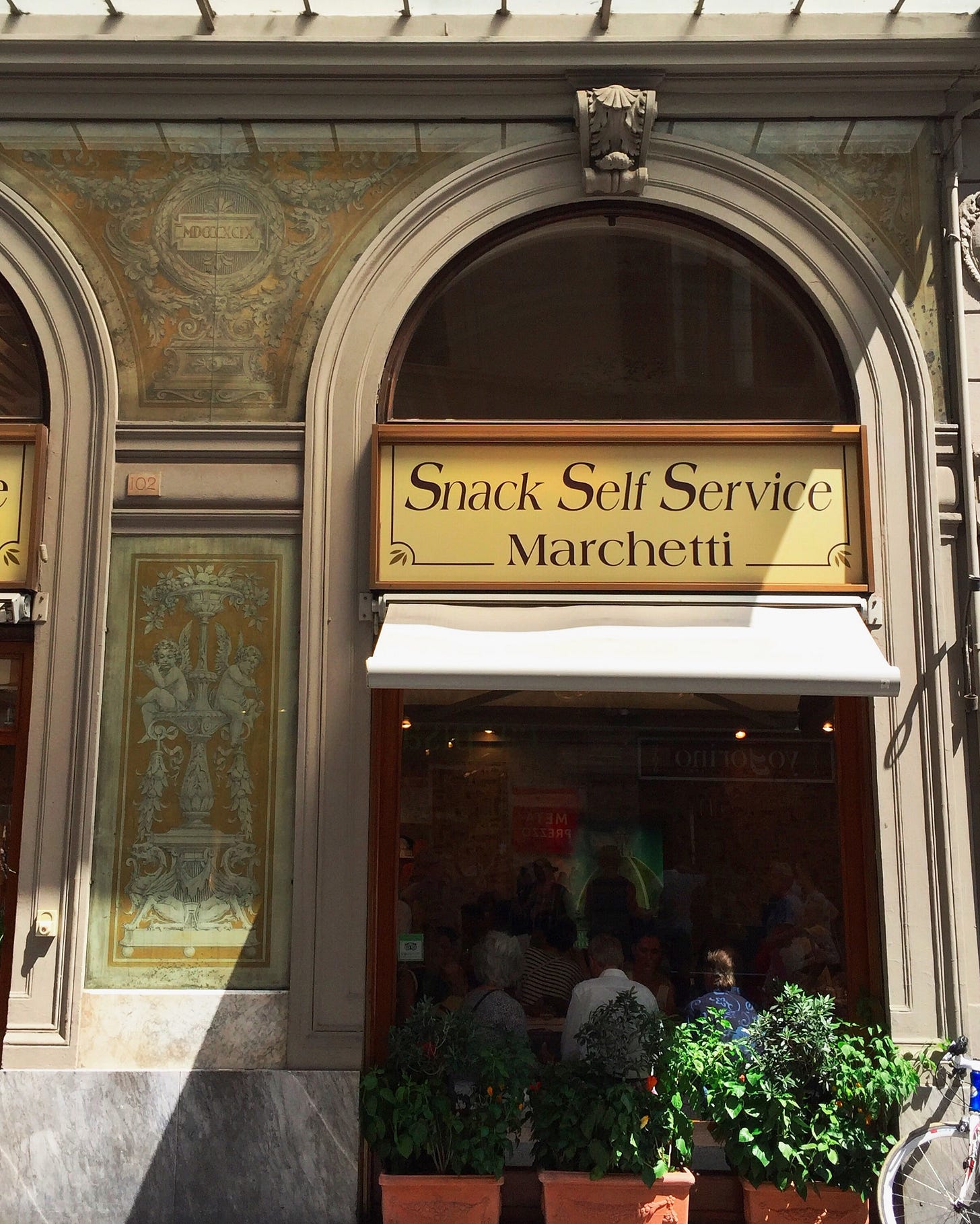
I love this newsletter (and I just splashed out for your first book), so I'm not being snide here, I'm being splendidly helpful - but 2lbs is not 2Kgs (the onion soup recipe, obvs).
I was resisting the Via Carota cookbook (did I really need another Italian cookbook?) but was pushed over the edge by a few posts on IG (Giulia’s among them). And of course I DID need another Italian cookbook. It’s a gem and a pleasure to read.
Favorite cookbooks are hard to pick, and ever changing--but your Glorious Vegetables, Rachel Roddy’s A-Z of Pasta, Emiko’s books, and Giulia’s Markets of Tuscany are all nearly always out and in use.
The older I get the more I appreciate simplicity and stripping back in recipes (elemental! 😀), for sure.